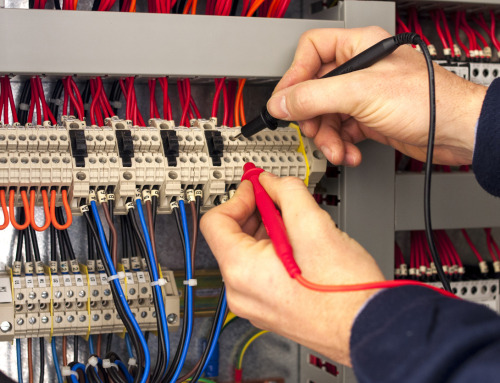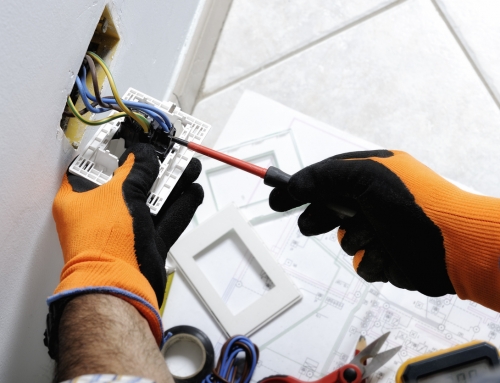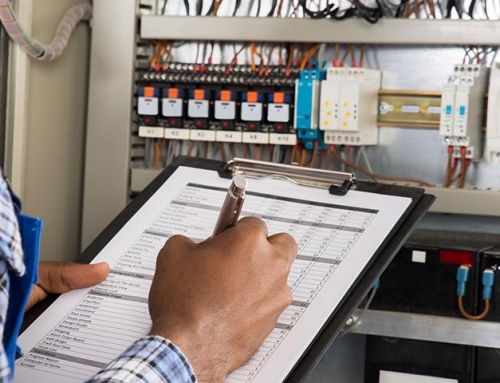In New Zealand’s warehousing industry, safety and efficiency are top priorities. Warehouses are busy environments where a wide range of electrical equipment is constantly in use, from power tools to three-phase machinery. With so many devices and tools plugged in, the risk of electrical faults and hazards rises significantly. Electrical testing and tagging services are a critical part of maintaining a safe, compliant, and fully operational warehouse environment.
This blog explores why these services are essential in warehousing, highlighting the types of electrical equipment that need regular testing and the safety benefits for staff and operations alike.
The Role of Electrical Testing and Tagging Services in Warehousing
Warehouses are filled with electrical equipment that needs to be kept in top working order to avoid safety risks. Electrical testing and tagging involve inspecting and testing each item to ensure it meets safety standards and is safe to use. This process is particularly important in warehousing, where equipment is often subject to heavy use and, in some cases, harsh conditions.
Whether it’s a hand tool, battery charger, or a three-phase machine on the factory floor, each piece of electrical equipment must be inspected regularly to identify any potential faults. Electrical testing and tagging services not only help ensure compliance with safety regulations but also protect both employees and equipment.
The Importance of Testing and Tagging in High-Risk Environments
Warehousing environments are often high-risk when it comes to electrical safety. With heavy machinery and multiple types of electrical devices in use, there is a heightened chance of wear and tear or electrical faults that could lead to severe accidents if left unchecked. Testing and tagging each piece of equipment help mitigate these risks, creating a safer environment and reducing the likelihood of fires, shocks, or other electrical incidents.
In New Zealand, standards such as AS/NZS 3760 outline the requirements for testing and tagging portable electrical equipment, ensuring it is safe to use. These standards specify that all equipment plugged into a low-voltage power supply must be tested regularly, including single-phase and three-phase appliances, portable transformers, RCD power boards, and more. Meeting these standards is crucial for reducing the risk of accidents and maintaining a compliant workplace.
What Needs to Be Tested and Tagged in a Warehouse Setting?
A wide range of equipment in warehouses requires regular testing and tagging. Here’s an overview of some common devices and tools that should be part of your electrical testing and tagging services routine:
- Portable Outlet Devices or Power Boards
Power boards are frequently used in warehouses to power multiple devices. Since they often handle a high load, they are prone to overheating, which can lead to fire hazards if they are not properly tested and maintained. - Three-Phase Machines on Factory Floors
Machinery operating on three-phase power requires careful monitoring. Unlike equipment that is permanently wired, three-phase machines that can be plugged in are at higher risk of electrical faults due to constant plugging and unplugging. - Portable Transformers and RCD Power Boards
RCD (Residual Current Device) power boards are critical safety devices that protect against electrical shocks. However, if these devices malfunction, they may not offer adequate protection. Regular testing ensures that RCDs are functioning as expected, providing an essential layer of safety. - Battery Chargers
Battery chargers are commonly used for equipment like forklifts, power tools, and other battery-operated devices. Because they are often in constant use, testing these devices can prevent issues like overheating or power surges. - Heavy-Duty Hand Tools
Portable power tools, such as drills and saws, are subject to heavy use and often face a high risk of damage. Testing these tools helps to catch wear and tear early, avoiding sudden breakdowns or dangerous electrical faults during operation. - Flexible Cords
Flexible cords, which are used with a wide range of devices, are particularly vulnerable to damage in warehouse environments. They can become frayed, bent, or cracked due to constant handling, making them a frequent source of electrical issues. The inspection interval for cords depends on the level of risk in the environment, but regular testing is essential to ensure they remain safe to use. - Other Plugged-In Devices
Essentially, any electrical item that is plugged into a power supply in a warehouse needs to be tested and tagged. This can include everything from small appliances to larger machines, as each item has the potential to cause electrical hazards if not properly maintained.
Benefits of Electrical Testing and Tagging in Warehousing
There are several key benefits to implementing a comprehensive electrical testing and tagging programme in your warehouse.
1. Enhanced Safety for Staff
The safety of your employees is paramount. Regular testing and tagging identify potential electrical hazards before they can cause harm. Faulty equipment can lead to serious injuries, such as electric shocks or burns, which not only impact staff health but can also affect morale and productivity. Ensuring all equipment is safe to use creates a safer work environment and gives your team peace of mind.
2. Prevention of Electrical Fires
Electrical faults are one of the leading causes of workplace fires. By identifying problems such as overloaded circuits, frayed cords, and faulty wiring, testing and tagging services help to significantly reduce the risk of electrical fires. This is particularly important in warehousing environments where large amounts of stock are stored, as fires can lead to substantial financial losses.
3. Minimising Downtime and Maintaining Productivity
When essential equipment breaks down unexpectedly, it can cause significant delays and reduce productivity. Regular electrical testing and tagging services help identify and address faults before they lead to equipment failure. By ensuring that tools and machines are in good working order, you can minimise unplanned downtime and maintain consistent productivity levels.
4. Cost Savings from Avoiding Equipment Replacement
Electrical equipment and tools represent a significant investment for any warehouse. When faults are caught early, they can often be repaired before they lead to more severe damage that requires replacement. By extending the lifespan of your equipment through regular maintenance, you can save on the costs of frequent replacements.
5. Compliance with New Zealand Safety Standards
Compliance with New Zealand safety regulations, such as the AS/NZS 3760 standard, is essential for maintaining a safe and legally compliant workplace. Regular testing and tagging demonstrate your commitment to safety and compliance, which can protect your business from potential repercussions.
How Often Should Testing and Tagging Occur in Warehouses?
The frequency of testing and tagging depends on the type of equipment and its usage. In high-risk environments like warehouses, electrical equipment may need more frequent testing due to the conditions and the likelihood of wear and tear. Generally, flexible cords and portable tools should be inspected every 6 to 12 months, depending on the level of risk and frequency of use.
For larger equipment, such as three-phase machines or power boards, testing intervals may vary. It’s best to consult with a professional electrical testing and tagging service provider to determine an appropriate testing schedule based on your specific equipment and workplace conditions.
Schedule Electrical Testing and Tagging for Your Warehouse in New Zealand
Selecting a reliable testing and tagging provider is essential to ensuring your warehouse remains safe and compliant. Jim’s Test & Tag New Zealand offers electrical testing and tagging services for warehouses, with a team of fully trained technicians who understand the unique needs of the warehousing industry. From protecting your team and preventing fires to minimising downtime and saving on equipment costs, testing and tagging provide valuable benefits for any warehousing operation.
Jim’s Test & Tag New Zealand offers professional testing and tagging to keep your gear safe and compliant. Our team of fully trained technicians offer comprehensive testing, tagging, and inspection services tailored to your electrical safety needs:
- Reminder Service – We will let you know before your equipment and appliances are due again for retesting so you don’t lose track.
- Data Management Service – We will keep an accurate record of your testing results for you.
- Repairing of Faulty Items – We can repair faulty items for you or coordinate with our partners to ensure that your appliances are well taken care of.
- Safe Work Method Statements (SWMS) – Every time we visit you, we will conduct a risk assessment of your environment and report any hazards to you.
We provide a comprehensive range of services including electrical testing and tagging services and RCD testing all in one place. You won’t need to look for different providers to keep your business safe. This is why Jim’s Test & Tag is the most trusted name for electrical testing and tagging services by various industries and businesses all throughout New Zealand. Call us at 0800 454 654 to learn more about our services, or request a free quote via our online form.







